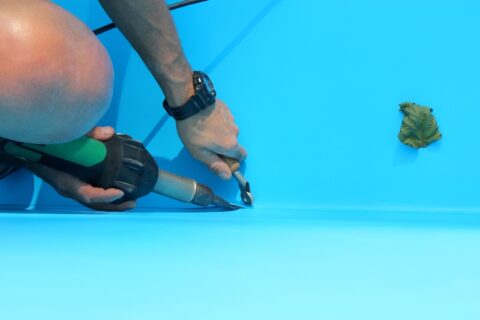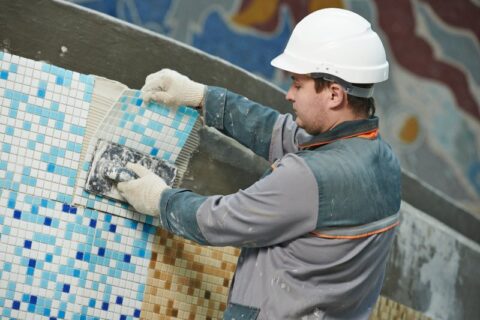Protect Your Pool Tiles as Temperature Drops
When the temperature plunges, you think about protecting your plants. In fact, you may even bring some of them inside. Do you ever think about protecting pool tiles? Pool tile damage can easily occur in the winter if you don’t know the proper steps to protect your pool tiles. No, you don’t have to bring your pool tiles indoors. However, you do have to be proactive about keeping them safe from harm. Here’s how to get your pool ready for winter.
- First, when you have the pool installed, take care to use the right kind of pool tile. Not all tiles are frost free, and some can crack when exposed to low temperatures. The tiles in your pool need to be winter proof if they’re going to have to withstand extreme temperatures.
- Tend to your joints before winter arrives. No, not your personal joints! The expansion joints in your pool are designed to allow for temperature changes, but the caulking around them can wear down over time. Properly sealing the expansion joint caulking before the weather gets cold will prevent water from getting behind the tiles, freezing, expanding, and popping off the tiles. You’ll also keep water from freezing inside the joint itself, which can cause tiles to loosen and fall and can even damage the beam.
- Lower your water level to protect against winter pool damage. It’s important to make sure the water is not at the same level as the pool tiles in cold weather. That’s because if the water freezes, it can put too much pressure on the tiles and cause them to crack or even detach entirely from the wall of the pool. When you’re preparing your pool for winter, lower the water to a good distance below your tiles to prevent them from sustaining damage. It’s good to go one to six inches below the tiles, but be careful not to drain your pool entirely. An empty pool can become unstable and vulnerable to the effects of hydrostatic pressure. In fact, it can even pop out of the ground a foot or two, causing damage that can be expensive to repair.
- Cover your pool to keep it from freezing. Using a pool cover is a good way to keep your pool water from getting too cold in the winter. Think about a pot on the stove: when you put a lid on it, the water gets warmer more quickly. Similarly, when you cover your pool after cleaning and treating it, warmth will be trapped under the cover and help keep your pool safe during the winter.
When you need someone to help you maintain your pool, call Millennium Pools & Spas. With over 30 combined years of experience in the pool industry, we provide a comprehensive range of services for both residential and commercial customers in Virginia, Washington DC, and Maryland. When you hire Millennium Pools & Spas, you get a well-qualified, industry-trained staff, services that are tailored to your needs, and a commitment to 100% customer satisfaction. Contact us for more information.


